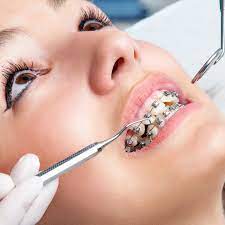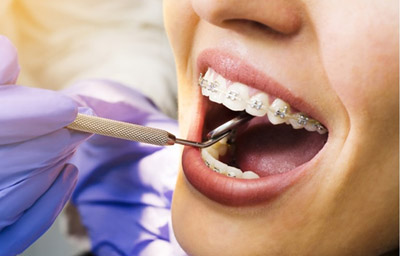The Causey Orthodontics Ideas
The Causey Orthodontics Ideas
Blog Article
A Biased View of Causey Orthodontics
Table of ContentsUnknown Facts About Causey Orthodontics7 Easy Facts About Causey Orthodontics ExplainedThe Ultimate Guide To Causey OrthodonticsAll about Causey OrthodonticsUnknown Facts About Causey Orthodontics
Overlooking occlusal connections, it was regular to remove teeth for a range of oral concerns, such as malalignment or overcrowding. The principle of an intact teeth was not commonly valued in those days, making bite connections appear irrelevant. In the late 1800s, the principle of occlusion was vital for producing dependable prosthetic replacement teeth.As these ideas of prosthetic occlusion progressed, it came to be a vital tool for dentistry. It was in 1890 that the job and effect of Dr. Edwards H. Angle started to be really felt, with his contribution to modern-day orthodontics particularly notable. Originally concentrated on prosthodontics, he instructed in Pennsylvania and Minnesota prior to directing his interest in the direction of dental occlusion and the therapies needed to maintain it as a typical problem, thus ending up being referred to as the "dad of modern orthodontics".

The principle of excellent occlusion, as proposed by Angle and included into a classification system, made it possible for a shift towards treating malocclusion, which is any kind of variance from normal occlusion. Having a complete collection of teeth on both arches was very looked for after in orthodontic treatment due to the demand for precise relationships in between them.
Some Known Incorrect Statements About Causey Orthodontics
As occlusion became the vital priority, facial proportions and aesthetic appeals were overlooked - emergency orthodontist near me. To attain perfect occlusals without utilizing exterior forces, Angle postulated that having excellent occlusion was the most effective method to obtain optimum facial aesthetics. With the passing of time, it ended up being fairly evident that also an extraordinary occlusion was not ideal when taken into consideration from a visual viewpoint
It ended up being apparent that orthodontic therapy could adjust mandibular growth, bring about the formation of functional jaw orthopedics in Europe and extraoral pressure actions in the United States. These days, both useful devices and extraoral tools are used around the world with the objective of changing growth patterns and kinds. Pursuing real, or at the very least enhanced, jaw relationships had actually become the major purpose of therapy by the mid-20th century.
More About Causey Orthodontics
 The American Journal of Orthodontics was developed for this purpose in 1915; prior to it, there were no clinical objectives to comply with, neither any type of specific classification system and braces that lacked functions. Till the mid-1970s, braces were made by wrapping steel around each tooth. With improvements in adhesives, it came to be possible to instead bond metal braces to the teeth.
The American Journal of Orthodontics was developed for this purpose in 1915; prior to it, there were no clinical objectives to comply with, neither any type of specific classification system and braces that lacked functions. Till the mid-1970s, braces were made by wrapping steel around each tooth. With improvements in adhesives, it came to be possible to instead bond metal braces to the teeth.This has had significant impacts on orthodontic treatments that are provided frequently, and these are: 1. Appropriate interarchal connections 2. Appropriate crown angulation (suggestion) 3.
The advantage of the design hinges on its brace and archwire combination, which calls for only minimal wire flexing from the orthodontist or medical professional (emergency orthodontist near me). It's aptly named hereafter attribute: the angle of the slot and thickness of the brace base eventually identify where each tooth is situated with little need for added manipulation
Rumored Buzz on Causey Orthodontics
Both of these systems utilized the same braces for each and every tooth and required the flexing of an archwire in three airplanes for locating teeth in their desired placements, with these bends dictating utmost placements. When it pertains to orthodontic devices, they are split into two kinds: detachable and repaired. Detachable appliances can be handled and off by the patient as needed.

Therefore, mostly all modern-day fixed home appliances can be considered variants on this edgewise home appliance system. Early 20th-century orthodontist Edward Angle made a significant contribution to the globe of dentistry. He created four unique appliance systems that have been utilized as the basis for many orthodontic therapies today, barring a couple of exceptions.
Some Of Causey Orthodontics

The cord ended in a string, and to relocate it forward, a flexible nut was utilized, which enabled an increase in area. By ligation, each private tooth was connected to this expansive archwire (orthodontist expert). Due to its minimal series of activity, Angle was not able to achieve exact tooth positioning with an E-arch
These tubes held a soldered pin, which can be repositioned at each consultation in order to move them in position. Called the "bone-growing appliance", this device was supposed to motivate much healthier bone growth as a result of its potential for moving pressure directly to the origins. Implementing it verified troublesome in truth.
Report this page